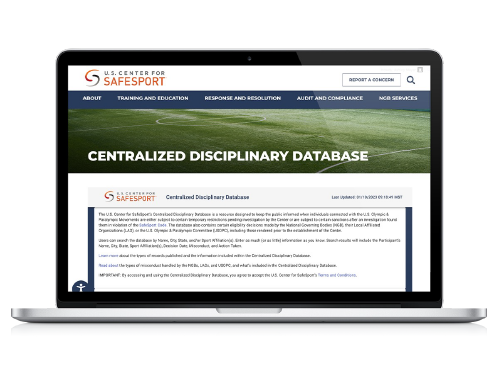Reporting Early Signs of Abuse
Prevention Education Series
The goal of this series is to bridge the gap between prevention education theory with on-the-ground practice.

No parent or guardian wants to consider the possibility that abuse can happen to our kids. It’s a scary and overwhelming thought, so we often avoid it. We also tend to rely on our levels of trust for the adults in our children’s lives, without knowing that the more trust we have with other adults, the greater the potential we could miss early warning signs.
But as we talked about before in this series, preventing abuse means doing the work, not just agreeing abuse is bad. When we avoid thinking about the possibility of our kids being abused, we also avoid preparing ourselves to recognize, respond to, and report concerns.
Early Warning Signs
One reason some parents and guardians don’t report abuse is they don’t know what to look for. Prevention educators intentionally create parent resources like this handout on grooming to help parents identify manipulative or inappropriate behavior. Further, even when we DO notice early warning signs, we tend to minimize them or question ourselves.
“I’m giving them the benefit of the doubt.”
“I don’t want to cause a scene.”
“What if I’m wrong?”
These are all things caregivers might say to themselves to explain away or rationalize problematic behavior. And let’s be clear—this does NOT indicate the parent or guardian has ill intent or doesn’t want to protect their child. But the possibility that someone could hurt our kids is so unthinkable, so horrific that it’s hard to face. This hesitation could lead to a missed opportunity to intervene in problematic behavior early.
Often parents reflect on key moments after learning about abuse and admit that they had concerns but thought they were being too sensitive. And this is where we need to empower parents with clear steps and language to voice those concerns. Reporting early warning signs directly to administrators and/or the proper authorities is critical to protect our children.
How to Respond
You don’t have to wait to respond until you KNOW for sure something happened. Even small boundary violations should be addressed. We know these conversations can be uncomfortable, but they are vital.
Here are some talking points to help when you need to raise early concerns.
- Directly to the person crossing a boundary: “I noticed that you invited my child to attend a private coaching session. While we appreciate the support, I would prefer that you notify me first. I’m sure you meant no harm, but our family takes boundaries and safety really seriously. In the future, please make sure you include me on all messages, so I am aware of these opportunities.”
- To the person’s supervisor or administrator: “My child’s coach walked into their private changing room yesterday. We have concerns about this kind of privacy violation. Can you please speak to them about the expectations of this program?”
- To the U.S. Center for SafeSport: “An athletic trainer sent an explicit joke to my child’s cell phone. This person is very casual with all the athletes and seems to want to be their friend more than a professional. Please investigate this so I have more information and so this does not happen again.”
Should you choose to engage your child in a conversation, follow these tips. Open communication about abuse and boundaries can help your kids feel safe and confident.
Remember, it’s not your responsibility to investigate or be absolutely certain abuse has occurred before you report it. It’s normal to have doubts, to question what you saw or heard. But we need to challenge ourselves to be brave for our kids and address any concern or boundary violation when it happens. Your concern is 100% valid, and as a caregiver, you have the right and the responsibility to address it.

Monica Rivera
VP of Prevention Education at the U.S. Center for SafeSport
Monica has spent the last 17 years in the field of interpersonal violence prevention, much of that time working directly with survivors of abuse. She leads our team of subject matter experts who share a belief in the transformative power of prevention education.
Do you have any questions or ideas? Please reach out to [email protected].
Featured Resource
Our Centralized Disciplinary Database (CDD) can be a great tool for parents and guardians. We encourage you to look up your child’s coach or sport to check if anyone interacting with your child is under any temporary or permanent restrictions related to abuse or misconduct. The CDD can also bring up many feelings. Here are some tips and resources to consider before you search.

JOIN OUR EMAIL LIST
Stay connected with the latest news, resources, and tools. Enjoy our quarterly e-newsletter, The Gameplan.
